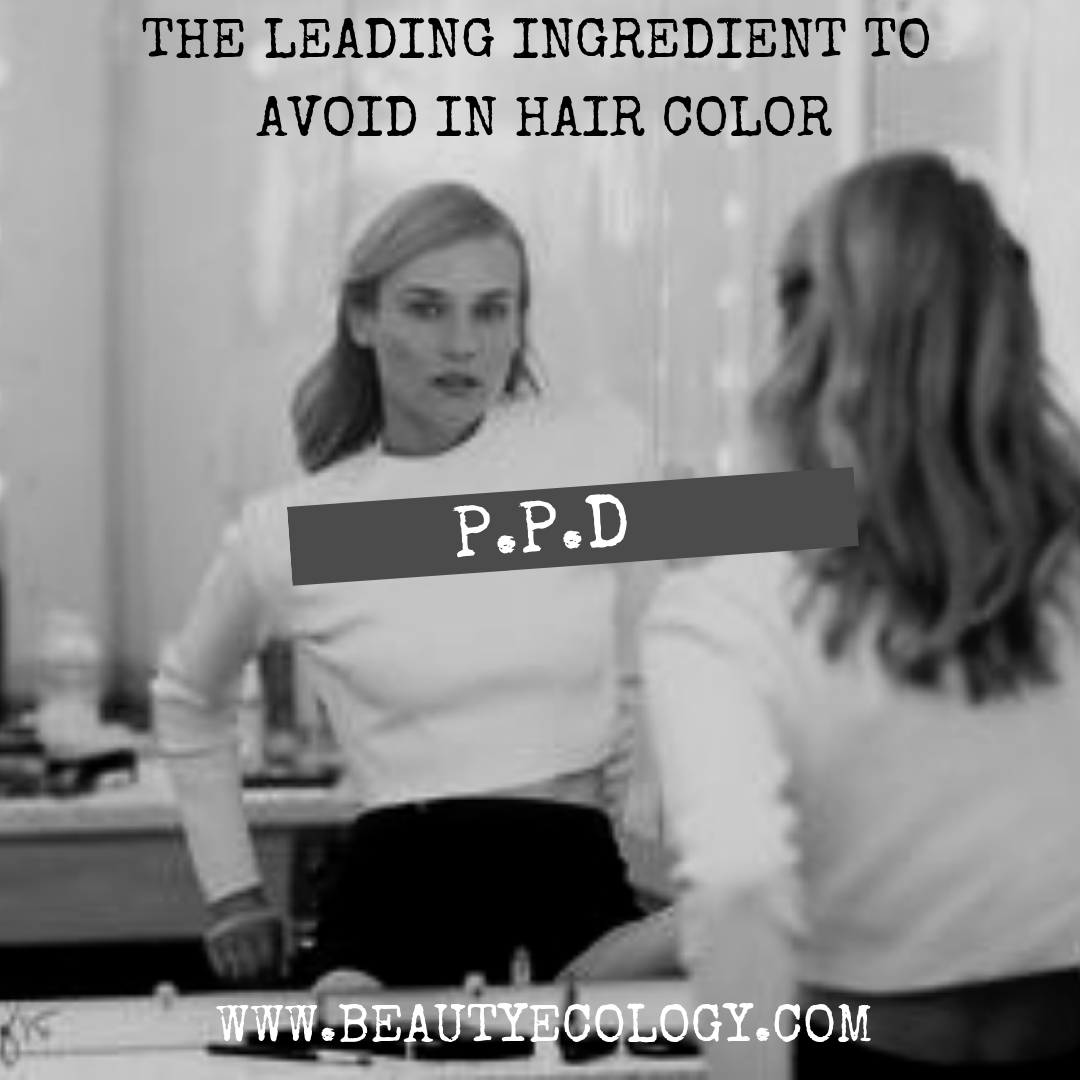Hey super natural!
Have you ever wondered if your hair color is safe, void of lurking chemicals?
More like, what woman hasn’t?!
In this short read (or scroll down to the bottom if you’d rather watch), you’ll learn how avoiding just three letters could potentially save your scalp health and your hair.
I’ve been privileged to be a hair color educator and provide hundreds of women with beautiful hair color for over 20 years behind the chair. This means my hands have been deep in a myriad of ingredients that have been nourishing and good - and some not so great (harmful ingredients). One of these “bad” ingredient is PPD (para-phenylenediamine).
Before natural was cool and organic was chic, I saw the ingredient safety issues around PPD, let alone it was highly allergenic. For this reason, over the last 15 years I’ve sought out the best hair color lines that provide a PPD Free and Ammonia free for our hundreds of clients at Beauty Ecology.
Why PPD a leading concerning ingredient?
PPD is a powerful chemical sensitizer and I’ve seen it cause strong allergic reactions in everyday healthy women from out of nowhere.
The top symptoms and reactions from PPD are itchiness. Headaches, redness and irritation and at worst, PPD can also cause a anaphylactic shock reaction.
Research Studies Share the Risk
University of Southern California study found that women who had colored their hair once a month for fifteen years or more had a 50% higher risk of bladder cancer.
A 2004 study published in the International Journal of Cancer, hair colorists who’d been working with color for more than fifteen years had a five-fold risk of getting bladder cancer compared to the general population.
PPD’s also been linked to non-Hodgkin’s lymphoma (in the American Journal of Epidemiology in 2008).
Research at the University in Sweden in 2001, suggests PPD might compromise the immune system, setting off rheumatoid arthritis (women who’d colored their hair for 20 years or more had twice the risk of women who had not).
So what are the best ways to avoid a out of the blue” reaction, worse reactions if already experiencing symptoms and overall better hair and inner health?
Top Five Tip to Avoid PPD Reactions in Hair Color
Wrap it up. Ask your stylist to remove risk by foiling lowlights to enclose the color and avoiding the scalp contact.
Go blonder. By using blonde shades and “lifting” the hair, you avoid dark tones which contain significantly higher levels of PPD.
Go longer between coloring and disguise. Use a powder to disguise regrowth and use a color conditioner that is PPD free.
Wear hats, avoid chlorinated pools, wash your hair less—all in the service of keeping your color as vibrant and healthy-looking as possible, so you need to re-color less often.
Prep with Benadryl. Hopefully you won’t fall asleep while applying color at home, but just in case, taking a anti-inflammatory supplement or OTC Benadryl will reduce symptoms. If you feel the slightest twinge of an allergic reaction after coloring, get medical help right away ( swelling, dizziness, difficulty breathing.)
Last but not least.
Always Always Seek out PPD-FREE formulas. The best place to start is to find hair color brands that are void of PPD, or at least very very low. Beauty Ecology is a top referal salon for safe, natural and conditioning hair color.- PRESS PLAY & SUBSCRIBE -
Contact our team and let us know if you’d like to benefit from PPD free color today! hello@beautyecology.com



